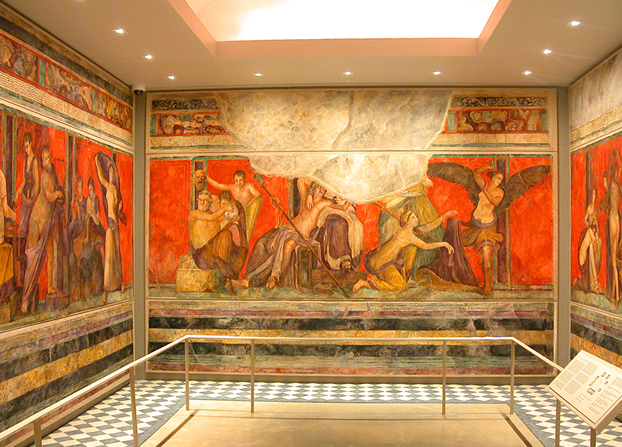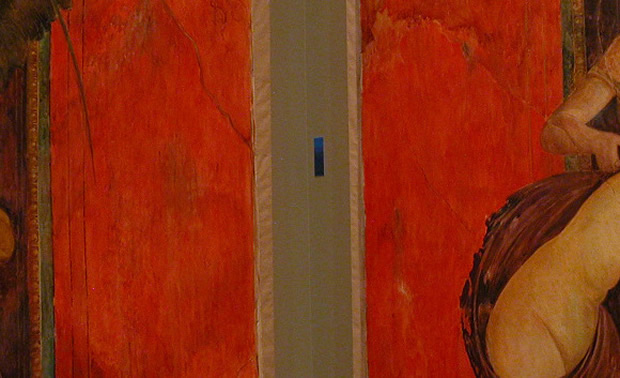Light and the Kelsey Museum's Barosso Watercolors
Light illuminates objects in museums, but too much of it can be harmful. Many dyes, inks, and paints fade as a result of exposure to light, and in some cases light causes materials to darken dramatically. Works of art on paper, like the Kelsey Museum’s Barosso watercolors, are especially prone to light damage. These watercolors, painted by Maria Barosso, were commissioned by Francis Kelsey in the 1920s and depict the famous ancient fresco cycle from the Villa of the Mysteries in Pompeii, Italy.

The Villa of the Mysteries Maria Barosso watercolors
To predict the watercolors’ light-fastness, Dr. Paul Whitmore of the Carnegie Mellon Art Conservation Research Center performed micro-fade tests. This test subjects a microscopic area of an object to intense light and records how quickly it changes. Micro-fade tests on the Kelsey’s Barosso watercolors not only predicted the rate at which the pigments will fade, they also revealed that light darkens one of the red pigments.

Dr. Paul Whitmore, of the Carnegie Mellon Art Conservation Research Center, performs micro-fade testing on the Kelsey’s Barosso watercolors.
As a result, the Kelsey employs a variety of strategies to limit the watercolors’ exposure to light. Gallery lights for the Barosso room are motion-activated, and conservators monitor the watercolors’ light exposure with a blue wool card. This card contains eight strips of wool cloth, each colored with a blue dye that fades at a known rate. One card is in the gallery and a second card is kept in the dark, as a control. By comparing the two cards, conservators can monitor potential long-term light damage.

A blue wool card.

A blue wool card in the Barosso watercolor display area.
